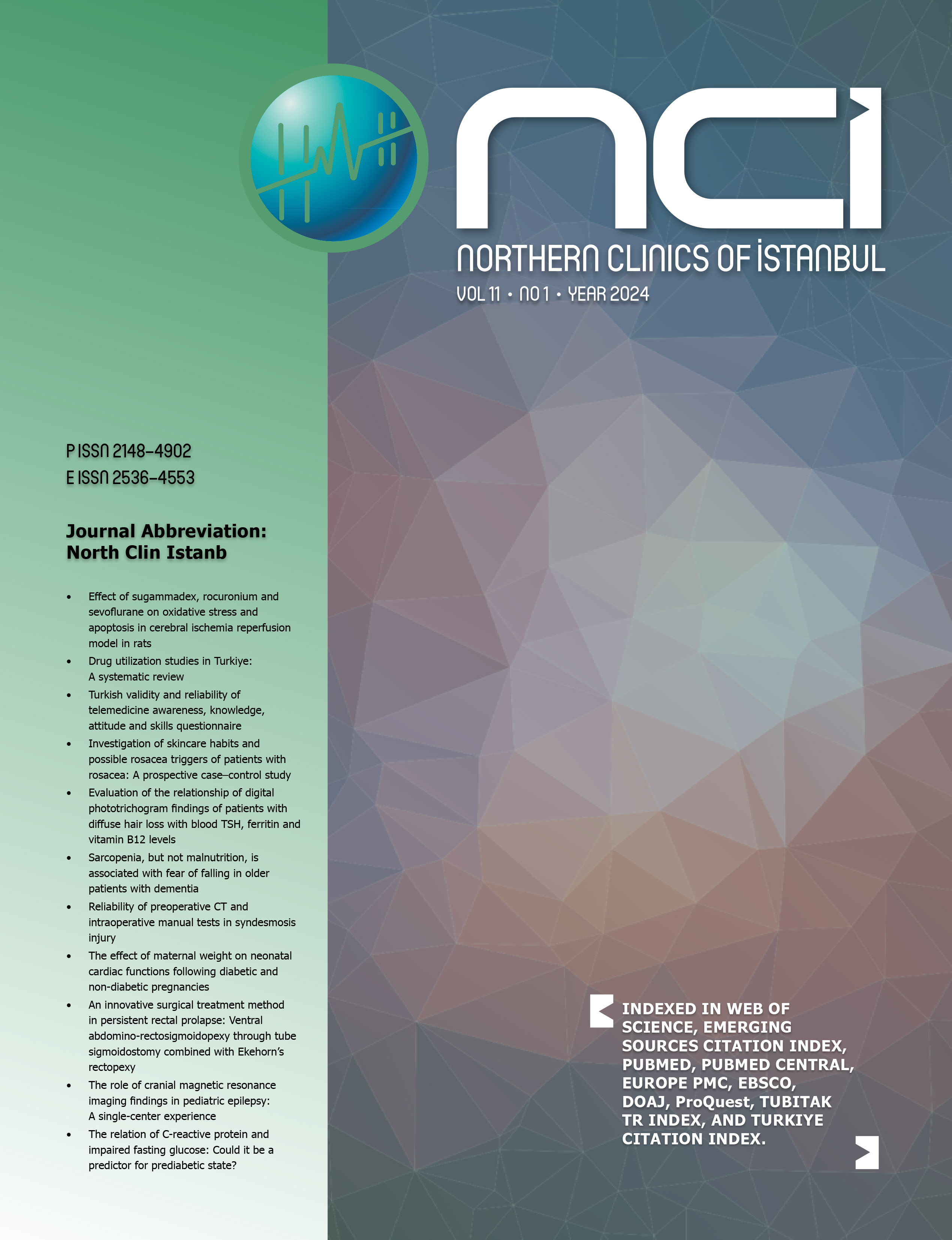Extended length of stay after elective ascending aortic surgery and associated risk factors
Levent Ceylan1, Abdulkerim Ozhan2, Murat Bastopcu3, Sevinc Bayer Erdogan11Department of Cardiovascular Surgery, Siyami Ersek Research and Training Hospital, Istanbul, Turkiye2Department of Cardiovascular Surgery, Kutahya Health Sciences University, Evliya Celebi Training and Research Hospital, Kutahya, Turkiye
3Department of Cardiovascular Surgery, Tatvan State Hospital, Bitlis, Turkiye
OBJECTIVE: Surgery on the ascending aorta incurs greater risk than other cardiac procedures. The primary aim of this study is to identify pre-operative and operative risk factors that play a role in extended length of stay (LOS) after elective surgery for ascending aortic aneurysms. The secondary aim is to determine post-operative outcomes associated with extended LOS.
METHODS: Patients who underwent elective surgery aged >18 between January 2018 and December 2019 for ascending aortic aneurysm with or without concomitant interventions in a single heart surgery center were retrospectively identified. Patients with days of hospital stay longer than the median length made up the extended stay group. The extended stay group was compared against the rest of the patients for demographics and operative parameters, as well as post-operative outcomes.
RESULTS: Patients with extended LOS were older (60.0±12.2 vs. 54.0±14.2, p=0.001) with more frequent coronary artery disease (CAD)(47.2% vs. 23.7%, p<0.001) and chronic obstructive pulmonary disease (COPD) (25.0% vs. 11.9% p=0.013). More patients in the extended LOS group required HCA for distal aortic anastomosis (43.5% vs. 17.5%, p<0.001) and cardiopulmonary bypass (CPB) durations were longer (283.1±83.9 vs. 225.3±84.2 min, p<0.001). Multivariate analysis revealed age, CAD, COPD, HCA, and CPB time as risk factors for extended LOS. Extended LOS patients had longer mechanical ventilation times (23.0±21.3 vs. 13.6±5.3 h, p<0.001), more frequently had acute renal failure (24.2% vs. 6.7%, p<0.001), reoperation for bleeding (20.7% vs. 6.7%, p=0.003), and stroke (14.3% vs. 4.3%, p=0.011).
CONCLUSION: In elective surgery for ascending aortic aneurysms older age, history of COPD and CAD, longer CPB times, and HCA during surgery are associated with extended LOS. Further studies are needed to investigate the association of prolonged hospital stay with long-term outcomes, as well as the impact of operation type on hospital stay.
Elektif Asendan Aort Cerrahisi Sonrası Uzamış Hastane Yatışı ve İlişkili Risk Faktörleri
Levent Ceylan1, Abdulkerim Ozhan2, Murat Bastopcu3, Sevinc Bayer Erdogan11Siyami Ersek Eğitim ve Araştırma Hastanesi, Kalp Damar Cerrahisi Anabilim Dalı, İstanbul2Kütahya Sağlık Bilimleri Üniversitesi Evliya Çelebi Eğitim ve Araştırma Hastanesi Kalp Damar Cerrahisi Anabilim Dalı, Kütahya
3Tatvan Devlet Hastanesi, Kalp Damar Cerrahisi Anabilim Dalı Bölümü, Bitlis
Amaç: Asendan aort cerrahisi diğer kardiyak cerrahilere göre daha yüksek risk içerir. Çalışmanın birinci amacı asendan aort cerrahisi için elektif ameliyatlardan sonra uzun hastane yatışı ile ilişkili preoperatif ve operatif risk faktörlerinin belirlenmesidir. İkincil amaç uzun hastane yatışı ile hangi ameliyat sonrası sonuçların ilişkili olduğunun saptanmasıdır.
Yöntem: Ocak 2018 Aralık 2019 arasında merkezimizde asendan aort cerrahisi için elektif operasyon yapılan 18 yaş üstü hastalar retrospektif olarak belirlendi. Medyan yatış süresinden uzun yatış süresi olan hastalar uzamış yatış grubunu oluşturdu. Bu grup ile diğer hastalar demografik, operatif ve postoperatif parametler açısından karşılaştırıldı.
Bulgular: Uzun yatış hastalarının yaşları daha yüksek (60.0 ± 12.2 vs 54.0 ± 14.2, p=0.001), koroner arter hastalığı (KAH) (47.2% vs 23.7%, p<0.001), kronik obstrüktif akciğer hastalığı (KOAH) (25.0% vs 11.9% p=0.013) sıklıkları daha fazlaydı. Uzamış yatış grubunda sirkulatuvar arrest gerektiren hastalar daha fazlaydı (43.5% vs 17.5%, p<0.001) ve kardiyopulmoner baypas (KPB) süresi daha uzundu (283.1 ± 83.9 vs 225.3 ± 84.2 dk, p<0.001). Çok değişkenli analiz ile yaş, KAH, KOAH, sirkulatuvar arrest ve KPB süresi uzamış yatış için risk faktörü olarak saptandı. Uzamış yatış grubunda mekanik ventilasyon süresi daha uzun (23.0 ± 21.3 vs 13.6 ± 5.3 saat, p<0.001), akut böbrek yetmezliği (24.2% vs 6.7%, p<0.001), kanama nedeniyle tekrar ameliyat gereksinimi (20.7% vs 6.7%, p=0.003) ve inme (14.3% vs 4.3%, p=0.011) daha sıktı.
Sonuç: Elektif asendan aort cerrahisinde ileri yaş, KOAH, KAH, uzun CPB süresi ve sirkulatuvar arrest uzamış yatış ile ilişkiliydi. Uzamış hastane yatışının uzun dönem sonuçlara etkisinin belirlenmesi için uzun takip süreli çalışmalara ihtiyaç vardır. (NCI-2021-3-52/R1)
Manuscript Language: English





















